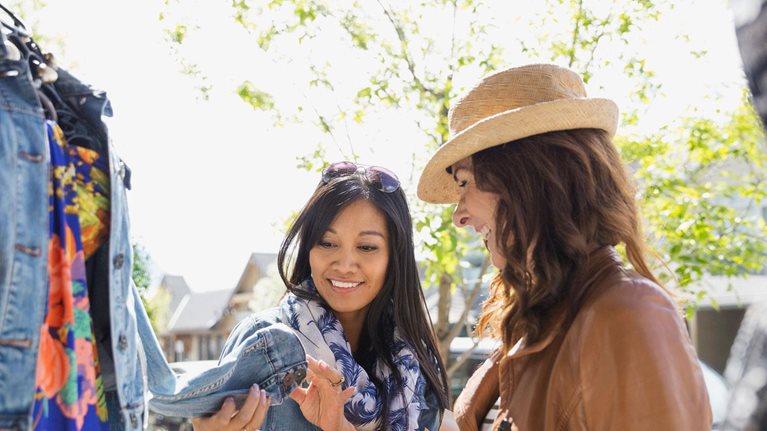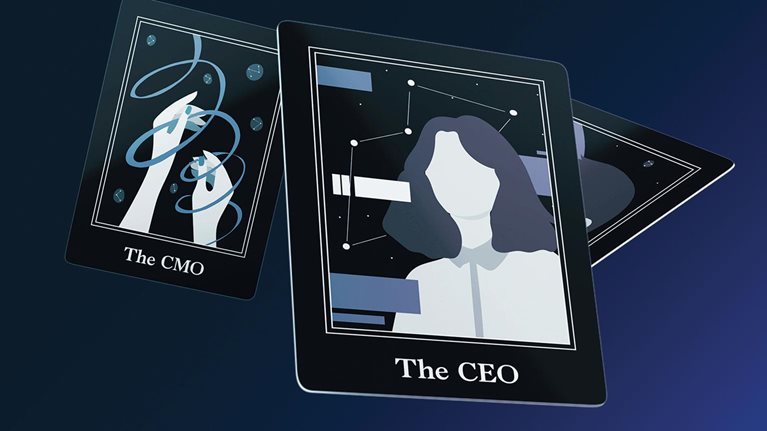Social media has shaken up a number of industries and created new opportunities for consumers and companies alike. Influencer marketing is a prime example, enabling once anonymous consumers to supplement and sometimes overshadow traditional marketing campaigns. In our latest Discussions in Digital podcast, Dianne Esber, a partner at McKinsey’s San Francisco office and a leader in Marketing & Sales, explores the state of influencer marketing with Katie Freiberg, head of Growth Marketing at ThirdLove; Alessandra Sales, VP of Growth at Ipsy; and cohost Jane Wong, an associate partner in McKinsey’s San Francisco office. The following is an edited transcript of their conversation.
Influencer marketing defined
Dianne Esber: Let’s start with some of the basics. What, in your mind, is influencer marketing? And how do you think it’s changed over the past few years?
Katie Freiberg: I’d define influencer marketing as people on social media with a following. We have been putting athletes on Wheaties boxes for a really long time, which I think is essentially influencer marketing as well. But I think the way we use the term today is hyperfocused on social media and people with followers because they were on a reality-TV show or they’re actually a celebrity. Or maybe they’re just the average mom next door. But it’s really all about having that following.
I actually think it should be a little broader than just social media. When you think about YouTube stars, those people are influencers as well and came along a little before Facebook and Instagram. So I think influencers can come in all forms.
Alessandra Sales: I think this concept of influencer marketing has existed for a long time. Because as Katie mentioned, we’re used to the idea of celebrity endorsements in TV ads or traditional marketing campaigns. I think that over the years, that concept has evolved, and these influencers are really driving marketing through content. That’s usually done on digital channels like social media, such as YouTube or Instagram.
What’s changed
Jane Wong: Is there anything that’s fundamentally changed about the concept of influencers—or celebrity endorsements—as we would call them before?
Alessandra Sales: I think what’s changed is that a lot of companies these days that are very familiar with performance marketing are really transforming the way they are attributing and giving value to influencers’ programs.
Before, with celebrity endorsements, it was really hard to put a return on investment (ROI) behind these investments. They were usually really big investments, but the results were sort of unknown. Today, when companies leverage influencers, especially on social media, it’s much, much easier to attach an ROI to the campaigns because you can just place your links, look at view-through conversions, and really understand the impact of these ads to your revenue stream.
Katie Freiberg: I agree, and to add to that, the digital space really opened up the door for anyone to be an influencer. It used to be the case that you had to be a big celebrity, or you had to have a big name behind you to get one of these deals. But now anyone can be an influencer. And I’m sure at some point tonight we’ll talk about micro influencers, who are people with 1,500–2,000 or maybe 5,000 followers, which is relatively small compared to some of the celebrities.
Micro versus macro influencers
Dianne Esber: How would you define a macro influencer versus a micro influencer? And how do you see them being used differently?
Katie Freiberg: We actually look at influencers by the number of followers they have. So if it’s less than 5,000, followers, I think they’re micro. Influencers with something like 5,000 to 100,000 followers are medium, and those with over 500,000 are definitely macro.
But we use them in different ways. The great thing about micro influencers is that their content is really authentic and relatable because these are women who don’t have professional photographers, and so it resonates a lot more with your audience.
Macro influencers are really interesting, because if you can find the right macro influencers who are already saying the same things as your brand messaging, you can find some really good synergy. You can get a really big brand lift from something like that, as opposed to the micro influencers.
When we’re thinking about planning our month or our quarter, we also want a certain number of influencers that fall within those two buckets, because we know there’s a right balance we need to strike.
Alessandra Sales: Ipsy is a little bit of an outlier, because one of the founders of the company was Michelle Phan, who was one of the most influential YouTubers out there. So Ipsy was born as an influencer website and that tradition has remained really close to our heart.
Like ThirdLove, we consider creators with more than 500,000 followers to be macro, and we work with these mega influencers a few times a year. When we have to launch a new product or a new campaign, we really try to leverage these big names.
But we also have micro influencer campaigns and work with about 8,000 influencers in a really organic way. We want to help them grow to become bigger influencers, so we host about 40 influencers a month in one of our four studios in Los Angeles. We don’t ask for money, and we don’t ask them to post for us.
Sometimes, we also provide photography, video production, and so on, as well where they are free to shoot whatever they need for their own brands or for other brands, and we have these live events where we connect them with the various brands out there. That gives them the opportunity to meet other people like them and discuss career opportunities with these brands.
It’s been really successful. Over the course of a few years we grew some of these micro influencers from a few thousand followers to mega influencers with millions of followers. What’s interesting is when we actually ask them to post for us or give them a monetary reward, we get less response than when we don’t ask for anything. That’s actually when we see the most success, when they post even though they’re not asked to do so. It feels really authentic at that point.
Dianne Esber: How do you keep fueling their excitement at scale beyond the smaller number that you help in this very active way?
Alessandra Sales: We have a few fairly big live events, with our biggest in New York, which is called Ipsy Live. For the one in November, we gathered about 5,000 members of the Ipsy community and representatives from all sorts of brands. This gives our users the opportunity to meet face to face with the biggest brands out there. We have events about ten times a year.
There’s one other thing we do that’s been successful. We’ve found that some of these influencers are very interested in the beauty space and want to become entrepreneurs themselves, and we have connections with lots of factories, because we produce on mass scale. So we collaborate with them by giving them the opportunity to manufacture some type of product through us, usually makeup.

‘True Gen’: Generation Z and its implications for companies
The elements of a successful campaign
Dianne Esber: What is a campaign that you guys can point to from an influencer perspective that you would say was really successful, and why?
Katie Freiberg: What works best for us is connecting with influencers who are already relaying our message, even if they’re not necessarily endorsing our products.
We recently had an event with an influencer named Katie Sturino. She’s known for going into dressing rooms and trying on, say, a size 12 dress, and finding the size 12 actually doesn’t fit. She then posts on Instagram in an ongoing campaign to pressure retailers to produce clothes that are actually the size they’re supposed to be.
She’s a great person to partner with because her message echoes ours. We had her come into our New York store for an interview with a live audience. It was a really great event, but it was more than just getting an Instagram post; it was actually a relationship-building exercise with her, because it’s important for us to find people who will champion our brand, even if we’re not necessarily asking them to post on our behalf.
Alessandra Sales: We’re trying to change the way beauty is seen in the world. We don’t necessarily want to accept the image of beauty that is put out there by all these big fashion brands. So we’re promoting the idea of personalization, that beauty is what’s beautiful to you, no matter your size, your race, or your age.
We’re working, for example, with the singer Ciara, as well as some medium- to nano influencers that are really diverse, from transgender people to people who used to be homeless. Working with all these different types of people and developing relationships with them has helped us get in touch with different type of audiences. As a result, for example, one of our most successful target segments on Facebook is actually the transgender community.
We’re trying to change the way beauty is seen in the world. We don’t necessarily want to accept the image of beauty that is put out there by all these big fashion brands.
Recruiting influencers, and the perils of managing them
Dianne Esber: How do you source your influencers? What’s your pipeline?
Katie Freiberg: We have one person who works in influencer marketing and she does a lot of the sourcing herself. She’s looking for women who are talking about body positivity. Of course, we also work with some talent that is represented by agencies, and then we’ll get leads from the agents.
The person who set up our influencer marketing program at ThirdLove came from an agency in LA, and she has a ton of connections. So she really opened up the door for some of this talent that we might not have had access to when we first started doing the influencer marketing program.
Alessandra Sales: Similarly, we do all the sourcing in-house. One of the challenges for us is that it’s hard to maintain such a big network of creators. We rely on some influencers’ tools, but there is a lot of work, and so our team is fairly large. I think our creator-plus-experiential team is probably more than ten people.
Katie Freiberg: I just thought of a related issue that we’ve run into only once or twice, which is managing comments from our influencers and their followers. For example, we recently had a problem when one of our influencers’ followers commented on one of her posts, and our influencer responded in a way that was just rude and unprofessional.
It didn’t represent the way ThirdLove would expect someone representing the brand to respond. So we asked her to take down the post. That can be tricky, and it can certainly pose a threat to the brand. You don’t want risk your brand’s reputation because one of the influencers you’re working with is not very nice on social media.
Alessandra Sales: I think you’ve brought up a great point, actually, because there was a big scandal in the influencer world a few months ago. I don’t recall all the details, but basically this young guy who has millions of followers across Instagram and YouTube got into some sort of fight with another big influencer. It just blew up internationally.
It makes you think about how potentially dangerous it could be to really get attached to one particular influencer or work full-time with a set of influencers. Because often, these people are really young, so they might say something that they don’t entirely mean, or they might just behave in a way that doesn’t represent the brand. So you always want to make sure that you collaborate with many influencers but don’t get too attached to any one of them.
Figuring out how to scale influencer marketing
Dianne Esber: Do you think influencer marketing can scale?
Alessandra Sales: Yes, but I think it’s getting a little bit harder. In the early days, companies were going after followers, and so they were mostly engaged with macro influencers, which really gives your brand a lot of visibility.
But then what you see often is that it doesn’t pay off, because this audience might not be as engaged, might not really relate to that particular influencer, the conversions are really not there. So companies started optimizing for quality over quantity, but it takes a lot more resources internally to scale with micro influencers.
Katie Freiberg: The scale is very hard, especially when you want a really authentic message, particularly coming from some of the micro influencers. You either need to work with agencies, or you need an in-house team that can manage it, but it’s certainly still a very manual process. Whatever the approach, I think brands need to put the effort behind it because it’s so valuable. What better way to get a really authentic story out than to work with an influencer?
Pros and cons for big players
Dianne Esber: What kind of advice would you give a larger company with more traditional marketing practices as they move into this new kind of modern marketing world that includes influencers?
Alessandra Sales: I think that even though they might be late to the game, they have a huge advantage because everybody is already aware of brands like Nike, Adidas, and Apple, and some people just feel really, really close to them. We often have to introduce our brands to influencers who aren’t aware of them.
Katie Freiberg: I actually think bigger brands might be at a disadvantage in the sense that they are so big that when they do partnerships or when they work with influencers, it’s very clear it was a paid partnership. I think they’re somewhat at a disadvantage because they aren’t able to drive that authenticity that comes with smaller influencers and smaller brands.
Opportunities and challenges ahead
Dianne Esber: When you think about the future of influencer marketing in the next, say, five years, what are you most excited about?
Alessandra Sales: We went from macro influencers to micro influencers. I eventually see this evolving into more community space, where influencers and creators are really going be the people close to you, like your family, your community, and your friends. But in my dreams, I see an environment where everyone can make a living out of this word-of-mouth effect. I don’t know exactly how it would evolve, but I think it’s going to become more and more micro as we move forward.
Katie Freiberg: I think I’m probably most excited to see how the platforms change based on influencer marketing, particularly with Instagram shopping and with referral programs such as LikeToKnowIt, where influencers can go through an affiliate route instead of directly with the brands.
Dianne Esber: Conversely, what challenges do you think are most important for the industry to overcome?
Katie Freiberg: I think as the market becomes more saturated, it’s much harder for brands, especially smaller brands, to differentiate themselves. You know, direct-to-consumer (D2C) brands have used this as a way to really build their brands and their voices. As bigger companies come into the space and start using influencers, D2C brands are going to be forced to figure out the next new thing. The beauty of D2C brands is that they are typically very scrappy and behave a little differently, because they can be nimble and move faster.
Alessandra Sales: I agree with that—and if the trend is becoming more and more micro, I think the other danger is that people might become less authentic, because they’re going to start seeing that monetary reward. So I think the challenge is how much longer will the audience believe that message is a real message?


